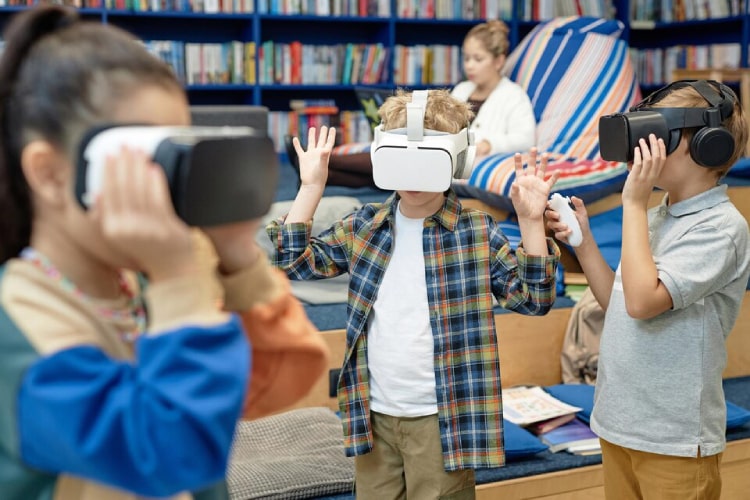Transforming the Old Paradigm – Immersive Technologies in Education

Introduction
The future of learning: immersive technologies are coming in new ways to engage students and deliver the content. Through virtual reality (VR), augmented reality (AR), and mixed reality (MR), education, as they say, bridges theory and the actual world. Students can explore places, conduct experiments, and work so thoroughly with lessons that it changes the way they understand them. It is the new features of adding involvement, accessibility, and personalization that will shape the future of education. In this post, students will be educated on how immersion tools are shaping the educational landscape.
The Fundamental Concepts of Immersive Technology Education
Immersive technologies are about the adoption of an artificial or augmented environment in developing interactive learning experiences. Virtual reality purposely immerses students in spaces that are completely virtual, augmented reality has digital elements overlaid on the real world while mixed reality brings together the two worlds, respectively digital and physical. They serve as more than tools; they are incubators of change allowing students to learn and engage away from the conventional environment of classrooms. As more of these devices are readily available, they have more recurrent entry into educational systems.
Different Types of Immersive Technology
For example, for virtual field trip experience one can use a VR headset; use AR applications to create an interactive textbook; and use MR laboratories to conduct experiments hands-on.
Main Advantages
A major benefit of experiential learning is that it allows creativity in the learning process. Having exposed themselves to knowledge in a format other than written, it is therefore easier for learners to retain complex concepts.
Engaging Students through Immersive Technologies
a Magic Spell Immersive technologies have a supreme advantage of capturing students’ attention; unlike static textbooks, it turns out to require participation. For instance, while taking VR tours through hundreds of ancient civilizations, students might use the AR facility to dissect a 3D representation of a human body. Such modes of engagement make learning fun as well as enhance retention of knowledge. Research indicates that an immersive learning environment heightens focus as well as curiosity.
Interactive Problem-Solving
Have students work through problems within these kinds of simulations that deal with engineering projects or even environmental disasters-
Active Learning Opportunities.
Students now become participants instead of passive observers who can be encouraged to understand even more.
Immersive Tools for Access and Inclusion
Education is being made accessible as boundaries recede in immersive technologies. For instance, AR and VR create an environment suitable for students with disabilities: one example is a visually impaired student with use of some auditory effect to describe objects or environments instead. Language learners can also practice in image-rich environments that reflect culture. In this sense, even students in terms of abilities, history, and culture can take an advantage of a high-quality education.
Support in Special Education
Virtual reality environments can also be adjusted to create sensory-friendly spaces for students with autism and anxiety.
Opening Borders
Immersive classrooms have enabled rural schools to allow their scholars to learn with youth all over the globe.
Preparing for the Future
Immersive Education in Tomorrow’s World Immersive technologies may be shaping the future careers and challenging the students. In this regard, schools have invested much in affordable VR headsets and AR software. However, they are busy also with training teachers on how to integrate these tools into their lesson planning. Immersive education will also expand as technology advances, thus preparing a generation to become innovators and achievers.
Emerging Tech Training for Educators
The workshops and certifications empower teachers to utilize immersive tools in the classroom.
Enabling Intelligent Immersion Scalability
These technologies will become ubiquitous in classrooms around the globe as their costs decline.
Conclusion
Immersive technologies were once-the-so-called future, but today they form the here and now of education. Transformation, reinventing student content engagement, removing accessibility barriers, and serving learners for tomorrow are a few of the means these technologies are reshaping the educational experience. Schools or educators bringing the technology are helping students realize the skills they need to successfully navigate the world of tomorrow.
